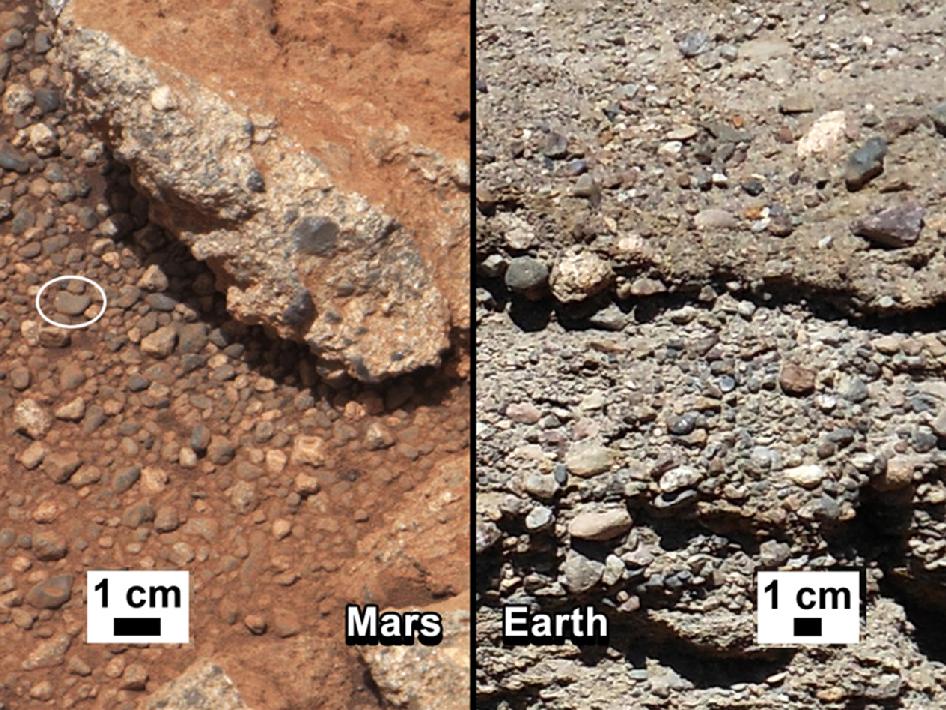Curiosity identifies old river bed on Mars

and hip deep,” said Curiosity science co-investigator William Dietrich of the University of California, Berkeley. “Plenty of papers have been written about channels on Mars with many different hypotheses about the flows in them. This is the first time we’re actually seeing water-transported gravel on Mars. This is a transition from speculation about the size of streambed material to direct observation of it.”
The smooth pebbly shape of the rocks shows that they were transported over a long distance, enough to jostle and wear each other smooth. They are too big and heavy to have been moved by the thin martian wind, which means they must have been transported by a liquid flow, and water is the only naturally occurring substance which can be liquid within the range of temperatures that Mars has experienced in its lifetime.
Satellite imagery of the site, just north of Mount Sharp, which lies within Gale Crater, had already given good reason to believe that water used to flow in that area, which is one of the reasons that it was chosen as the landing site for Curiosity. The imagery shows an alluvial fan of material washed down from the rim, streaked by many apparent channels, sitting uphill of the new finds.
This discovery means that Curiosity is already close to completing its primary mission, which is to discover whether Mars was once capable of supporting life. Which is pretty good going, considering that it’s designed to last for a year and could easily continue working for twenty more.
For more about Curiosity, visit: http://www.nasa.gov/msl
